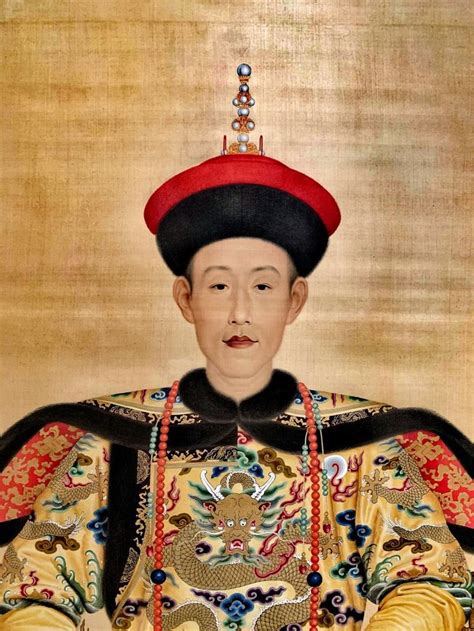Giuseppe Castiglione

Giuseppe Castiglione, a renowned artist and missionary, played a significant role in bridging the artistic gap between Europe and China during the 18th century. His unique style and influence on Chinese art and culture have made him an iconic figure, especially in the realm of traditional Chinese painting.
The Early Life and Journey to China

Born on July 19, 1688, in Milan, Italy, Giuseppe Castiglione, also known as Lang Shining in Chinese, displayed an early talent for art. His artistic journey began at the Academy of St. Luke in Rome, where he studied under the renowned painter Carlo Maratta. Castiglione’s exceptional skills in painting and architecture caught the attention of the Jesuits, who invited him to join their missionary work in China.
In 1715, at the age of 27, Castiglione embarked on a journey that would change his life and the course of art history. He traveled to China, arriving in the city of Guangzhou (Canton) after a long and arduous voyage. Here, he began his missionary work, but his artistic skills quickly became his most powerful tool for communication and cultural exchange.
Artistic Contributions and Style

Castiglione’s artistic style, a unique blend of European techniques and Chinese themes, revolutionized Chinese art. He introduced Western perspective, shading, and chiaroscuro (the use of light and shadow) to Chinese painting, which traditionally relied on flat, two-dimensional depictions.
One of his most notable contributions was his integration of European animals and plants into Chinese landscapes. His paintings often featured exotic creatures like lions, which were unfamiliar to the Chinese, set against the backdrop of familiar Chinese landscapes. This blend of cultures and artistic styles was a groundbreaking innovation.
Castiglione's works were not limited to paintings; he also designed palaces, gardens, and even designed the emperor's dragon robe. His influence extended to various art forms, including porcelain design, where his European-inspired patterns were adopted by Chinese craftsmen.
Influence and Legacy
Castiglione’s influence on Chinese art was profound and long-lasting. He not only introduced new techniques but also inspired a generation of Chinese artists to embrace a more realistic and three-dimensional style of painting. His works and teachings became the foundation of the Western Learning (Xiyanghua) style of painting, a significant branch of traditional Chinese art.
The Qing Dynasty, under the reign of Emperor Qianlong, was particularly influenced by Castiglione's art. The emperor was a great patron of the arts and a personal admirer of Castiglione's work. Qianlong's support for Castiglione's art led to the establishment of a special painting academy, where Castiglione's style and techniques were taught and preserved.
Castiglione’s Impact on Modern Art
Giuseppe Castiglione’s legacy continues to resonate in modern art and cultural studies. His unique fusion of European and Chinese artistic traditions has become a subject of extensive research and inspiration for contemporary artists.
Many modern artists have drawn inspiration from Castiglione's works, exploring the possibilities of cross-cultural artistic fusion. His influence can be seen in various art movements, from the early 20th-century exploration of Orientalism to contemporary artists who blend Eastern and Western aesthetics.
Moreover, Castiglione's life and works have inspired numerous literary and cinematic creations. His story, a fascinating blend of art, culture, and religion, continues to captivate audiences worldwide.
Conclusion

Giuseppe Castiglione’s artistic journey and impact on Chinese art represent a remarkable chapter in the history of cultural exchange. His innovative style, blending European techniques with Chinese themes, not only influenced a generation of Chinese artists but also laid the foundation for a unique artistic movement. His legacy continues to inspire and shape the world of art, reminding us of the power of cultural fusion and its potential to create something truly extraordinary.
What is Castiglione’s most famous work?
+One of Castiglione’s most renowned works is “The Hundred Horses’ Stable,” a series of paintings depicting Emperor Qianlong’s stable. These paintings showcase Castiglione’s masterful use of perspective and his ability to capture the grandeur of the imperial court.
How did Castiglione’s art influence Chinese porcelain design?
+Castiglione’s art had a significant impact on Chinese porcelain design. His European-inspired patterns, featuring intricate floral motifs and geometric designs, were widely adopted by Chinese craftsmen. These designs added a new level of sophistication to Chinese porcelain, making it even more desirable and sought-after.
What was Castiglione’s role in the Qing Dynasty court?
+Castiglione held a prestigious position in the Qing Dynasty court. He was not only an artist but also an advisor to Emperor Qianlong. His artistic skills and knowledge of Western art and architecture were highly valued by the emperor, who often sought his advice on various artistic and architectural projects.



